Tempo is a high-performance blockchain for global payments co-developed by Stripe and Paradigm, positioned to provide enterprises with faster, lower-cost stablecoin settlement and clearing. This Innovation and Tech article offers a practical research framework and risk notes across positioning, technical direction, ecosystem pieces, and uncertainties.
Summary: Tempo aims to be an enterprise-grade payments chain, balancing Ethereum compatibility with low-fee stablecoin settlement, forming a closed loop with Stripe’s Bridge/Privy product stack.
What is Tempo?
According to Fortune, Tempo is described as a “high-performance, payments-oriented Layer 1” aimed at large and cross-border enterprises; its Ethereum-compatible posture (Solidity/tooling) lowers development and integration hurdles. This information stems from Fortune’s exclusive and subsequent industry write-ups. Viewed alongside Stripe’s acquisitions and product launches over the past year, its “stablecoin accounts, card issuing, and wallet infrastructure” puzzle is largely set: Stripe acquired stablecoin-orchestration platform Bridge; announced support for USDC and Bridge’s USDB stablecoin accounts; and acquired developer wallet infrastructure Privy. These moves give a new chain ready-made anchors for merchant entry, settlement/clearing, and wallet UX.
How does Tempo reduce payment cost and latency?
By staying EVM-compatible and optimizing transaction ordering and fee curves at the protocol level for payments, it can raise throughput and fee predictability. Making stablecoins the primary use case and unifying “merchant accounts ↔ on-chain settlement” helps remove friction from cross-chain and middle layers. Analysts note that if Tempo targets enterprise payments first, service quality (SLA), privacy, and auditability will matter as much as TPS.
A realistic rollout path is to connect stablecoin accounts and card networks to on-chain in/out ramps: Bridge has introduced a “stablecoin co-branded card” with Visa, enabling multi-region issuing and stablecoin spending under a single API. If Tempo launches, it would naturally complement such fiat–crypto edge products.
Where does Tempo differ?
Vertical integration
Stripe brings a vast merchant network, risk controls, and settlement systems; combined with Bridge’s stablecoin orchestration and Privy’s wallet infra, a new chain could deliver an end-to-end experience from “acquisition → issuing/acquiring → on-chain settlement → reconciliation,” unlike a generic public chain.
A clear enterprise audience
Reports point to Fortune 500/large cross-border firms, emphasizing predictable fees and compliance-ready hooks—different from the “community-first, then enterprise” path. Commentators also warn that excessive permissioning could weaken openness and composability; balancing “open vs. controlled” will define long-term competitiveness.
What should enterprises and developers watch?
For merchants/platforms, if Tempo plugs into existing Stripe accounts, they could unify stablecoin acceptance, settlement, and payouts across regions, cutting cross-border fees and time-to-funds. For financial institutions/payment partners, on-chain reconciliation, audits, and batch operations could sit within risk frameworks.
For developers, reports say Ethereum compatibility is a primary design goal—so Solidity, current SDKs, and monitoring can be reused. An enterprise-facing chain will prioritize compliance modules (KYT, OFAC filters, acquiring risk) and SLAs—key to B2B integration depth and commercial viability.

Biggest unknowns and risks
Formal specs not public
Tempo remains “in stealth”; beyond job posts and limited external remarks, there’s no whitepaper/codebase/mainnet timeline. Judgments rely on secondary sources and must defer to official disclosures.
Governance vs. openness trade-offs
If stronger permissions are used for enterprise compliance, how decentralization and composability are preserved remains to be seen. Commentators caution “branded chains” not to detach from open, interoperable ecosystems.
Regulation and geographic variance
Cross-border stablecoin settlement spans multi-jurisdiction KYC/tax/flows. Liability splits for on-chain transactions vs. fiat clearing, dispute resolution, and data protection require explicit compliance design.
Competition with existing networks
Ethereum L2s and Solana are pushing merchant payments and stablecoin use cases. A new chain must show verifiable advantages in cost, finality, and ecosystem partnerships.
FAQ
Has Tempo been officially announced and open-sourced?
Not yet. Public info comes from media and hiring pages; whitepaper and repositories await official release.
How does it relate to Stripe’s stablecoin accounts and Bridge/Privy?
Together they may form a loop across “accounts/issuing/wallets/on-chain settlement,” with the new chain providing high-performance settlement and interoperability.
Is Ethereum compatibility confirmed?
Multiple reports say Solidity and Ethereum tooling are in scope, but details remain undisclosed.
Who is it for?
Reports cite large/cross-border enterprises, with fee predictability and performance certainty as priorities.
Potential industry impact?
If realized, it would connect “merchant network + stablecoin accounts + wallet infra” to a high-performance chain, lifting stablecoin usability in real-world payments and settlement.
Key Takeaways
Tempo is reported as a high-performance, payments-oriented enterprise chain emphasizing Ethereum compatibility and stablecoin settlement.
Stripe’s Bridge/Privy acquisitions give anchors for accounts, issuing, and wallets—enabling vertical integration.
Via Visa×Bridge stablecoin cards, fiat and on-chain ramps could shorten funds cycles.
Target users are large/cross-border enterprises; cost and determinism outrank “pure TPS.” Compliance modules and SLAs are key.
The openness–compliance balance is unresolved; avoid a “walled garden.”
Technical specs and timelines are not public; defer judgments to future official releases.




